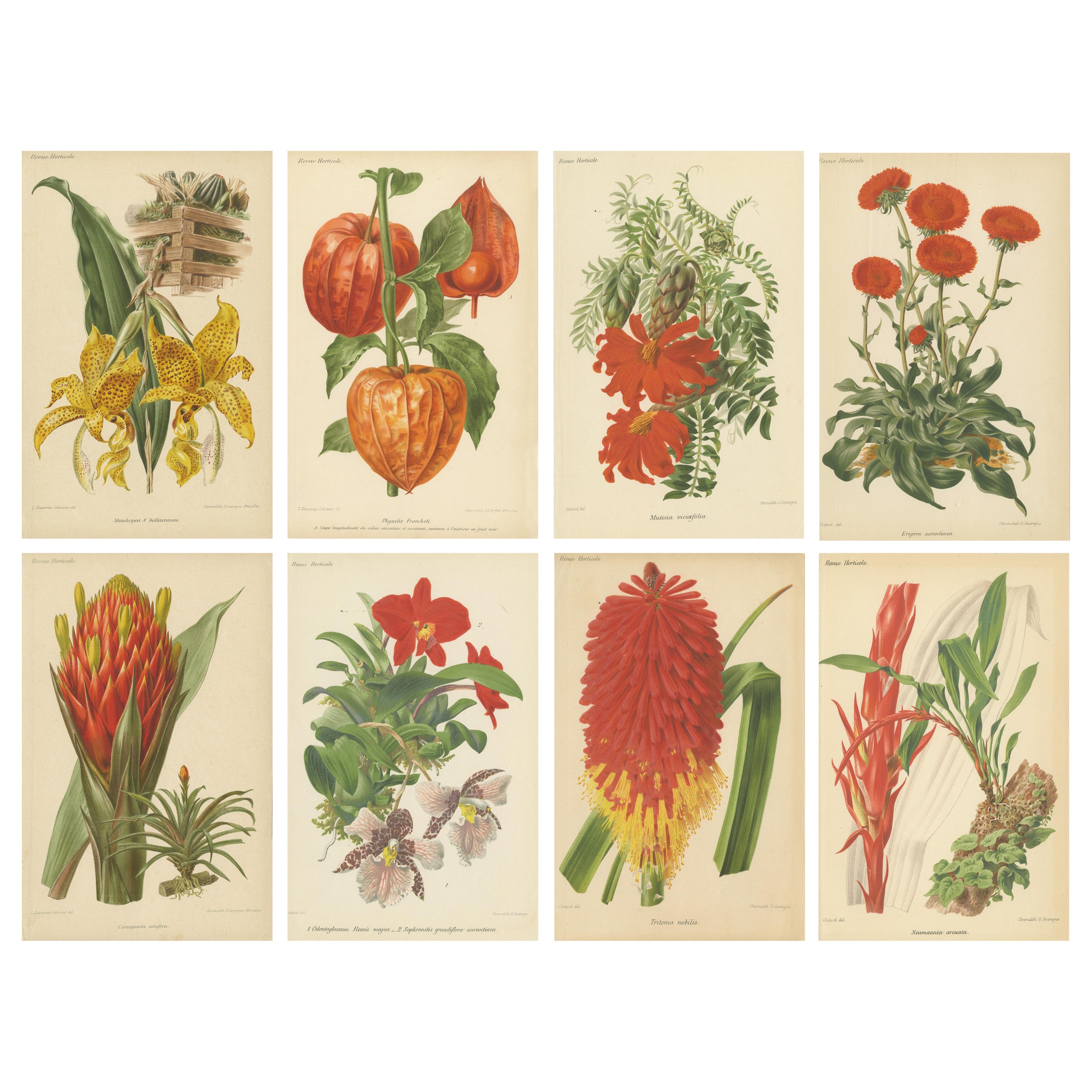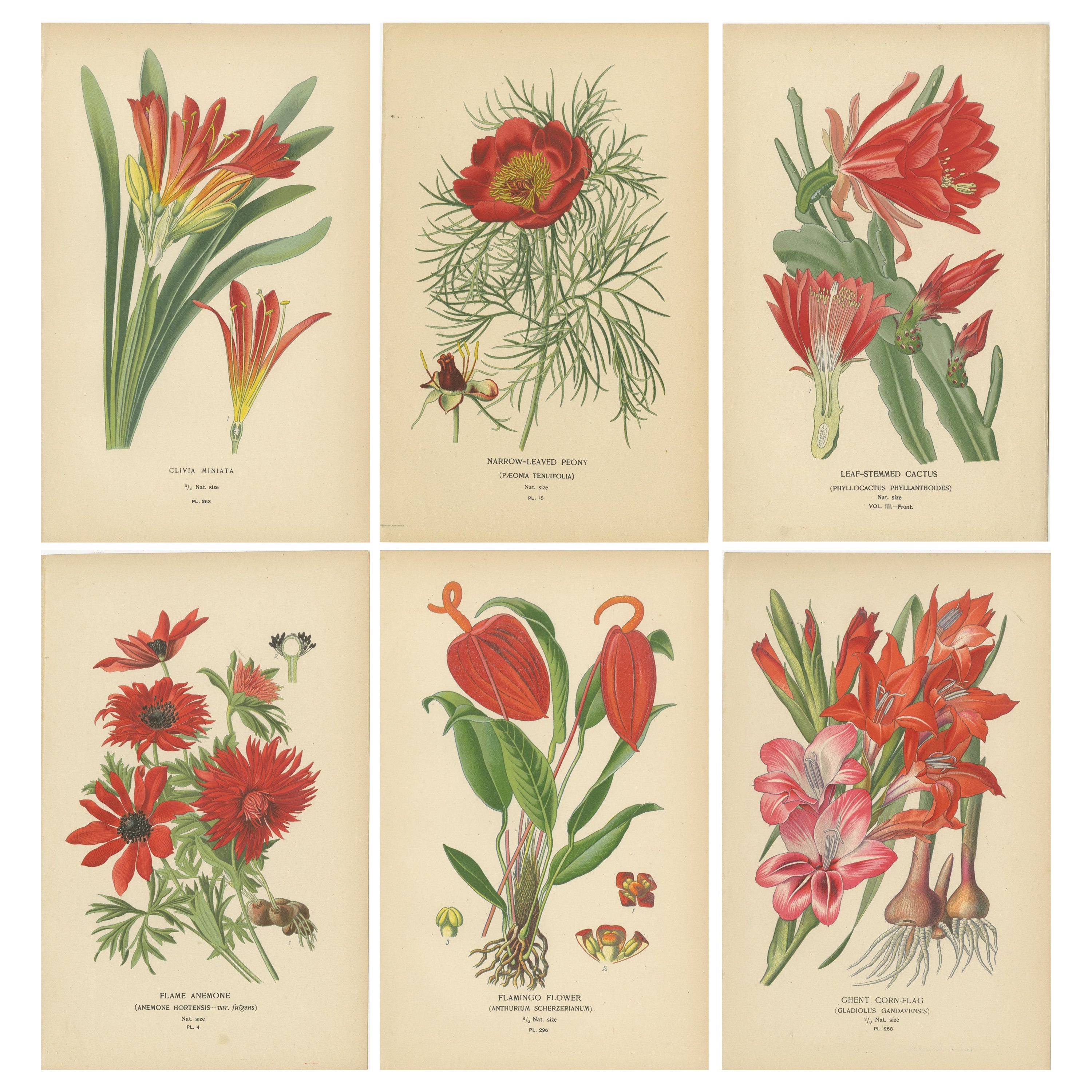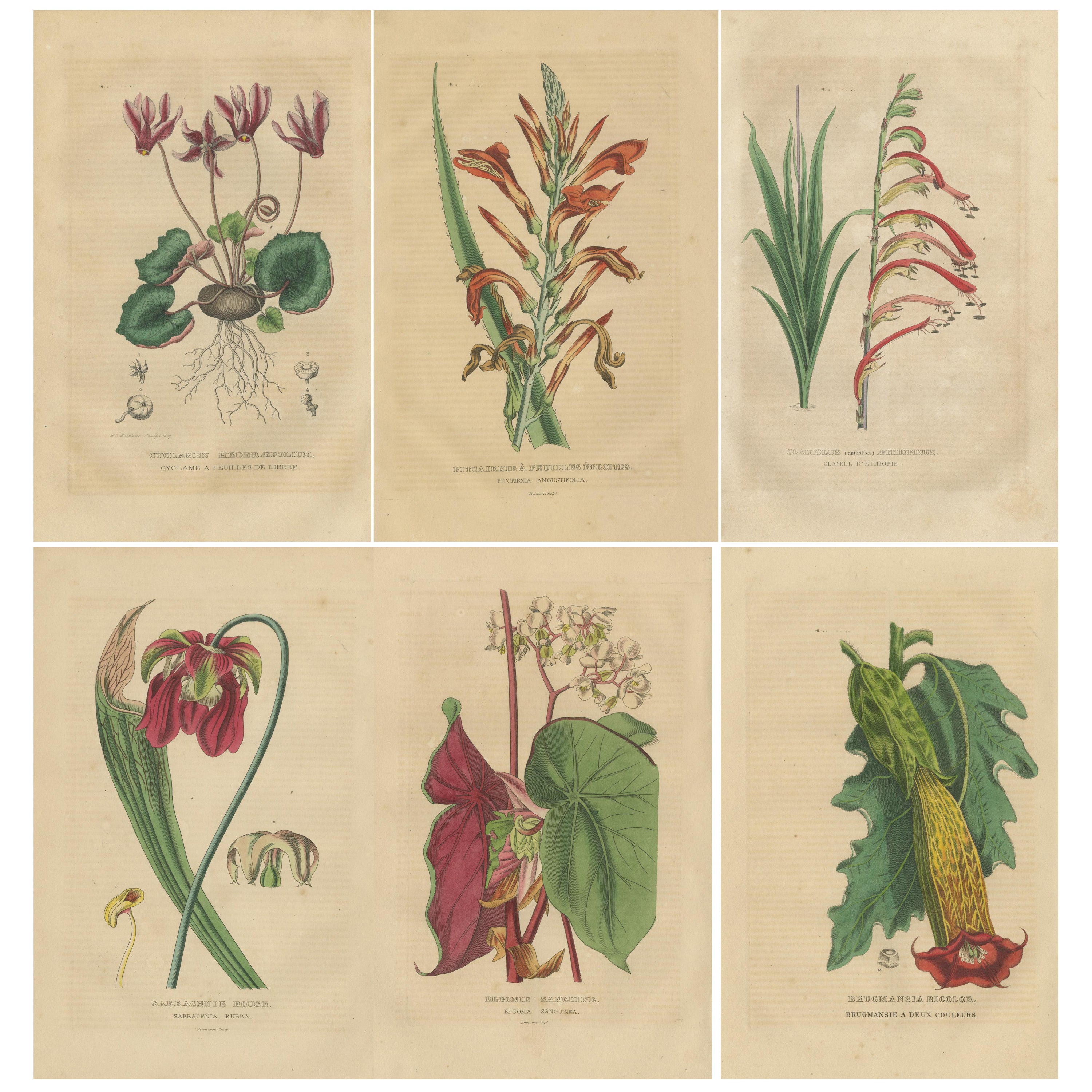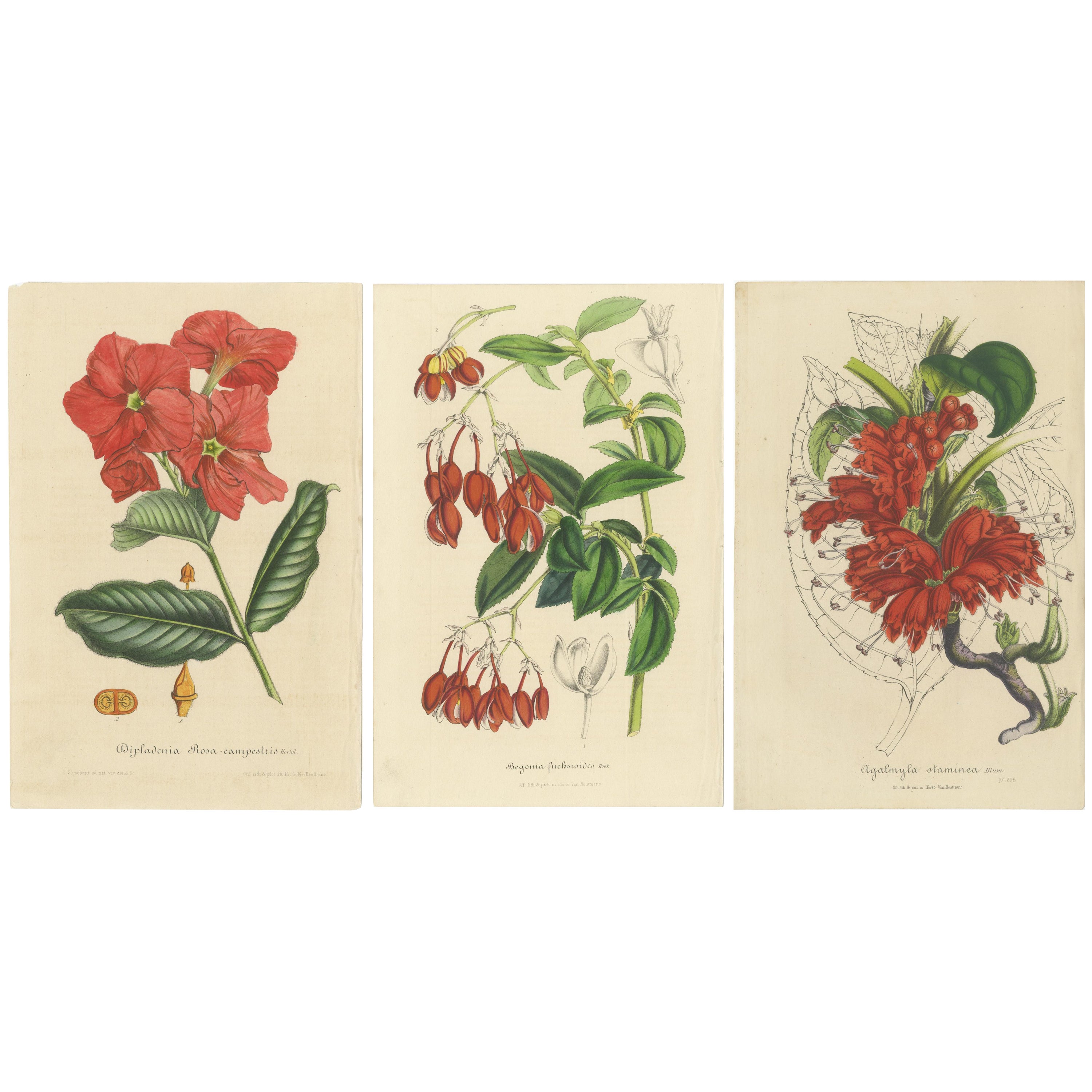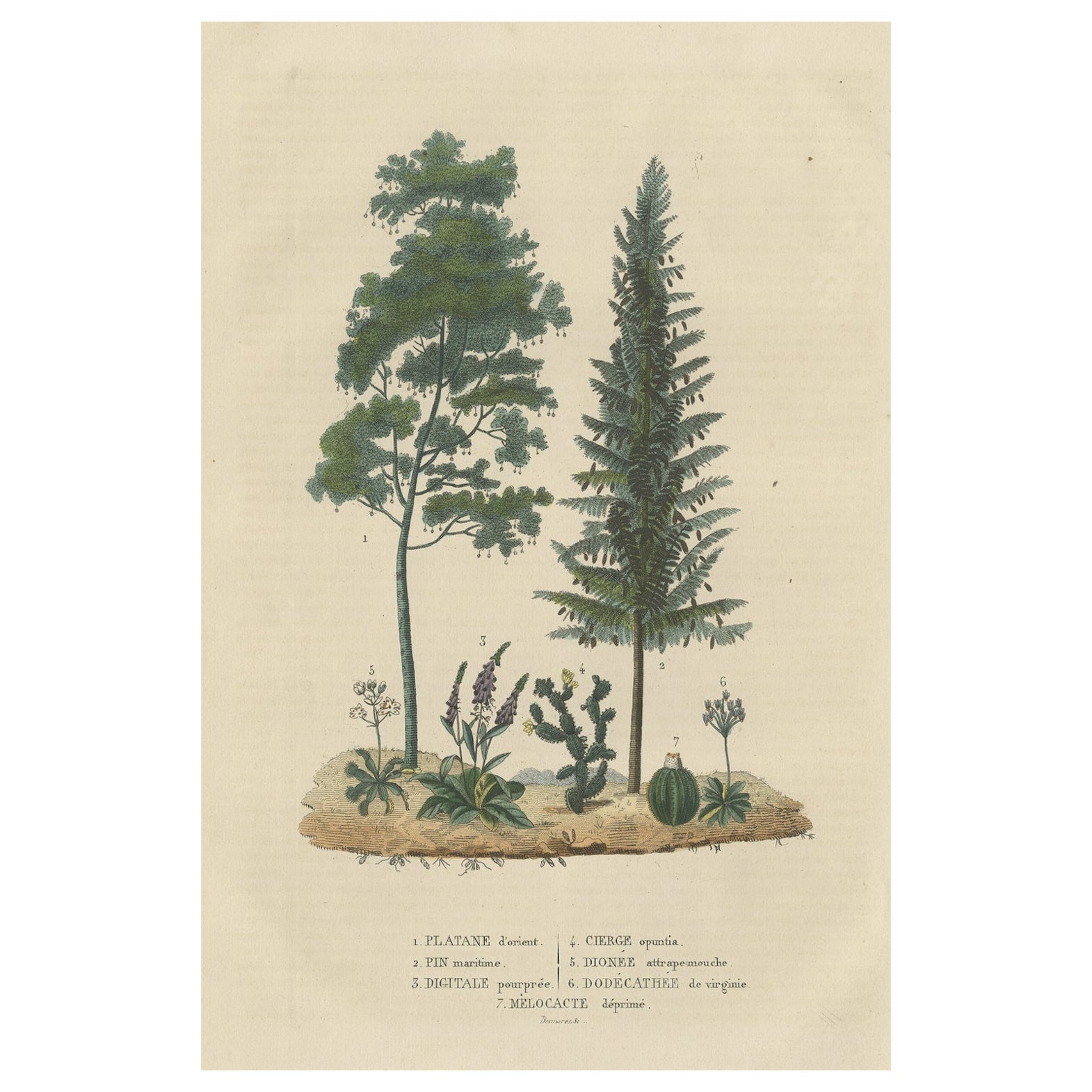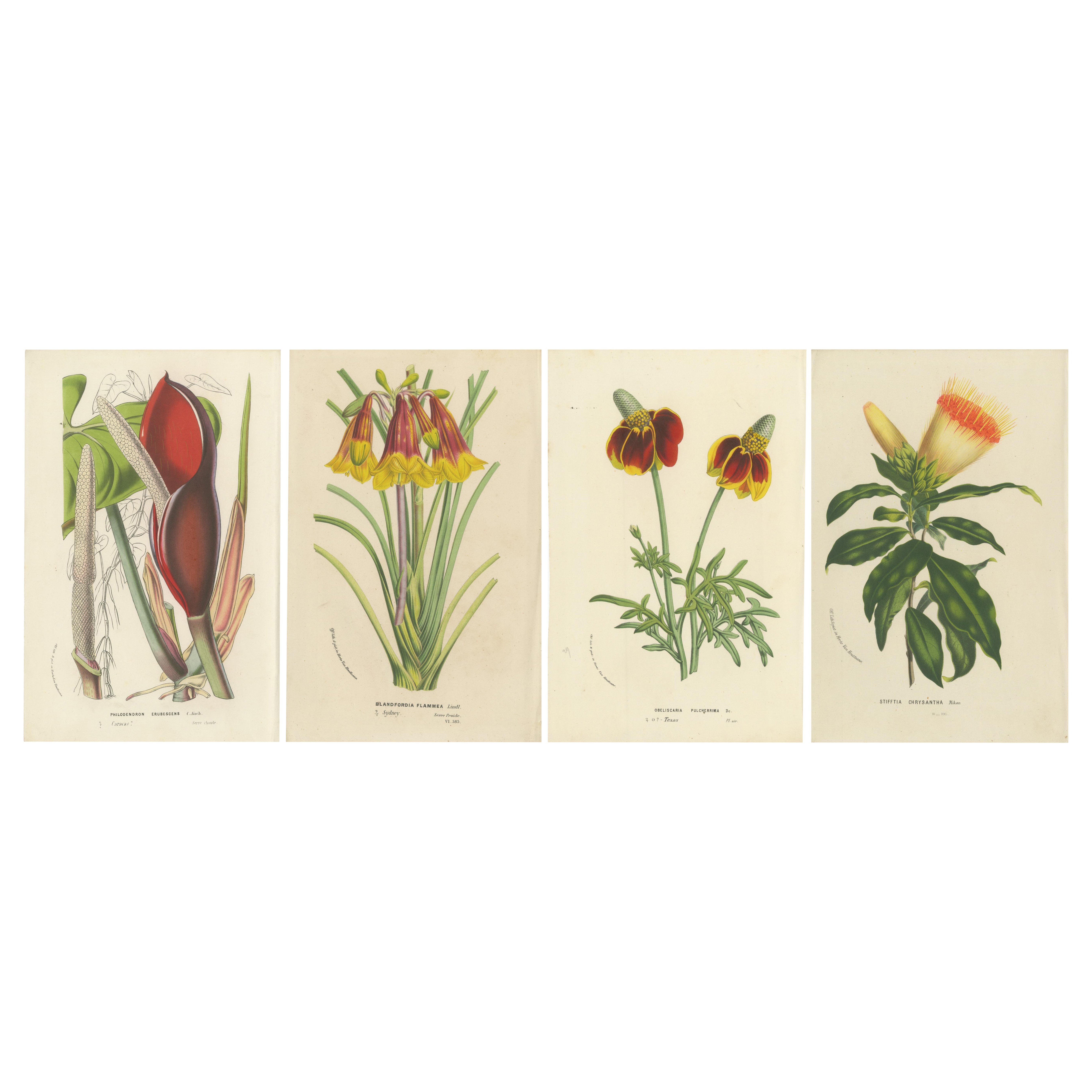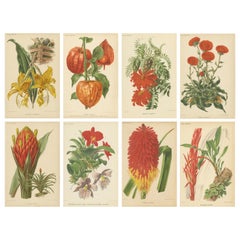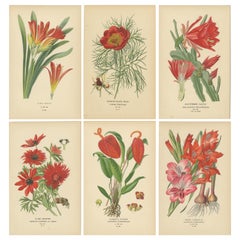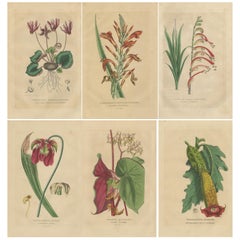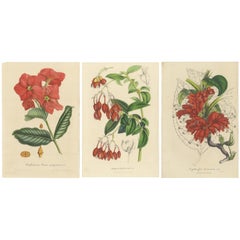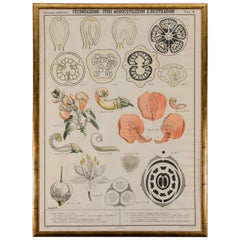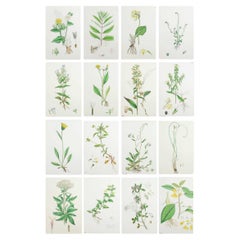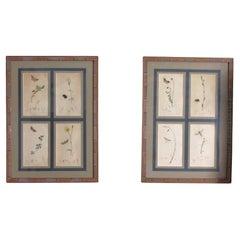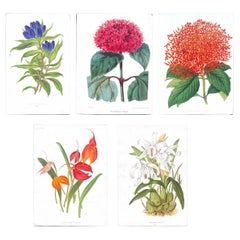Items Similar to Botanical Classification Prints: Linnaean Flower Classes & Cryptogamia – 1867
Video Loading
Want more images or videos?
Request additional images or videos from the seller
1 of 13
Botanical Classification Prints: Linnaean Flower Classes & Cryptogamia – 1867
$214.54
£158.86
€180
CA$295.02
A$328.14
CHF 171.74
MX$4,002.20
NOK 2,157.98
SEK 2,029.86
DKK 1,370.40
About the Item
Botanical Classification Prints: Linnaean Flower Classes & Cryptogamia – Antique 1867
These detailed antique prints depict Linnaeus's classification system for plants, illustrating the flower structure and reproductive classes in fine hand-coloured engravings. They originate from the Atlas der Natuurlijke Geschiedenis voor scholen en huisgezinnen, adapted into Dutch by T.C. Winkler after Traugott Bromme, and published in Amsterdam by J.C. Loman in 1867. Designed for educational use, these plates introduced 19th-century students to systematic botany and plant morphology.
Plate 34 shows:
* Classes I to XIV: Monandria, Diandria, Triandria, Tetrandria, Pentandria, Hexandria, Heptandria, Octandria, Enneandria, Decandria, Dodecandria, Icosandria, Polyandria, Didynamia
Each class depicts flower samples with variations in the number and arrangement of stamens and pistils, labelled as Monogynia, Digynia, Trigynia, etc.
Plate 35 shows:
* Classes XV to XXIII: Tetradynamia, Monadelphia, Diadelphia, Polyadelphia, Syngenesia, Gynandria, Monoecia, Dioecia, Cryptogamia
Including algae, mosses, lichens, fungi, and ferns under Cryptogamia.
These educational botanical prints were essential for teaching plant classification before photographic or digital guides were available. The engravings capture structural differences with precision, from stamens and pistils to algal fronds and mushroom caps, arranged systematically for clear comparison.
Condition summary:
Good condition for their age, with slight overall toning and minor scattered foxing mainly in the margins. The paper remains strong with no tears or repairs, and the hand colouring is clear and fresh.
Framing tips:
Frame these botanical classification prints together or separately in black, dark wood, or walnut frames with cream or off-white mounts to enhance their scientific clarity and subtle floral colours. For traditional interiors, gold frames add antique warmth and academic elegance. UV-protective glass is recommended to preserve colours and prevent further toning. These antique natural history prints will enrich any botanical art collection, educational interior, or herbarium gallery with timeless scientific beauty and decorative charm.
- Dimensions:Height: 11.23 in (28.5 cm)Width: 8.67 in (22 cm)Depth: 0.01 in (0.2 mm)
- Materials and Techniques:
- Place of Origin:
- Period:
- Date of Manufacture:1867
- Condition:Good condition for their age, with slight overall toning and minor scattered foxing mainly in the margins. The paper remains strong with no tears or repairs, and the hand colouring is clear and fresh.
- Seller Location:Langweer, NL
- Reference Number:Seller: BG-12980-31, -321stDibs: LU3054345798642
About the Seller
5.0
Recognized Seller
These prestigious sellers are industry leaders and represent the highest echelon for item quality and design.
Platinum Seller
Premium sellers with a 4.7+ rating and 24-hour response times
Established in 2009
1stDibs seller since 2017
2,599 sales on 1stDibs
Typical response time: <1 hour
- ShippingRetrieving quote...Shipping from: Langweer, Netherlands
- Return Policy
Authenticity Guarantee
In the unlikely event there’s an issue with an item’s authenticity, contact us within 1 year for a full refund. DetailsMoney-Back Guarantee
If your item is not as described, is damaged in transit, or does not arrive, contact us within 7 days for a full refund. Details24-Hour Cancellation
You have a 24-hour grace period in which to reconsider your purchase, with no questions asked.Vetted Professional Sellers
Our world-class sellers must adhere to strict standards for service and quality, maintaining the integrity of our listings.Price-Match Guarantee
If you find that a seller listed the same item for a lower price elsewhere, we’ll match it.Trusted Global Delivery
Our best-in-class carrier network provides specialized shipping options worldwide, including custom delivery.More From This Seller
View AllOriginal Vintage Botanical Illustrations from Revue Horticole, circa 1855
Located in Langweer, NL
Here are descriptions of the eight botanical illustrations, including the Latin and English names of the plants, why they are significant, and details about the creators and the tech...
Category
Antique 1850s Prints
Materials
Paper
$638 Sale Price / set
20% Off
Botanical Illustrations from the Victorian Era: A Visual Celebration of Flora
Located in Langweer, NL
These are vibrant chromolithographs from "Favourite Flowers of Garden and Greenhouse" by Edward Step, illustrated by Désiré Bois and published in 1896 by Frederick Warne & Co., Londo...
Category
Antique 1870s Prints
Materials
Paper
$467 Sale Price / set
20% Off
Botanical Rarities: Pristine Hand-Colored Engravings from 1845
Located in Langweer, NL
This image is a beautiful collage of antique hand-colored botanical engravings from 1845, each showcasing a different plant species with exceptional detail and vibrant colors. The en...
Category
Antique Mid-19th Century Prints
Materials
Paper
$528 Sale Price / set
24% Off
Free Shipping
Exquisite Botanical Illustrations from Curtis’s Botanical Magazine (1847)
Located in Langweer, NL
These beautiful hand-colored botanical illustrations, drawn and lithographed by the renowned artist Walter Hood Fitch, were featured in Sir William Jackson Hooker's *"Curtis's Botanical Magazine,"* published in London in 1847. Fitch was one of the most prolific and skilled botanical illustrators of the 19th century, known for his ability to capture the intricate details and vibrant hues of the plants he depicted.
Sir William Jackson Hooker, a famous British botanist and the director of the Royal Botanic Gardens, Kew, commissioned these illustrations as part of his work to document newly discovered plants from around the world. The *Curtis’s Botanical Magazine* has been published since 1787 and remains one of the longest-running botanical periodicals.
Detailed Descriptions of Each Plant
#### 1. **Dipladenia Rosa-campestris** (*Hortul. ex Veitch*)
- **English Name**: Rose Dipladenia
- **Description**: This illustration showcases *Dipladenia rosa-campestris*, a striking flowering plant known for its showy pink to deep red trumpet-shaped flowers. Native to tropical regions of South America, particularly Brazil, *Dipladenia* belongs to the family Apocynaceae and is prized in horticulture for its vibrant blooms and ability to climb. Fitch's illustration emphasizes the waxy leaves and the vivid color of the petals, bringing the plant to life on the page.
#### 2. **Begonia fuchsioides** (*Hook.*)
- **English Name**: Fuchsia-flowered Begonia
- **Description**: The *Begonia fuchsioides* is depicted with its characteristic red, pendulous flowers, which closely resemble the blooms of fuchsia plants. This species of Begonia is native to tropical regions and is popular for its delicate, bell-shaped flowers and glossy leaves. Fitch’s attention to the arrangement of the leaves and the contrast between the flowers' vibrant red and the soft green leaves provides a lifelike representation of this exotic plant.
#### 3. **Agalmyla staminea** (*Blume*)
- **English Name**: Staminate Agalmyla
- **Description**: This illustration captures the unique red tubular flowers of *Agalmyla staminea*, a plant native to Southeast Asia. The species is part of the Gesneriaceae family and is known for its bright, showy flowers that grow in dense clusters. Fitch’s careful rendering of the plant’s leaves and the intricate veining, along with the vibrant red flowers, highlights his talent for bringing the botanical subject to life with both scientific accuracy and artistic flair.
### About the Makers
#### **Walter Hood Fitch** (Artist and Lithographer)
Walter Hood Fitch (1817–1892) was one of the most influential botanical artists of the 19th century, working primarily with Sir William Hooker and later his son, Joseph Dalton Hooker, at Kew Gardens. He produced thousands of illustrations for various botanical publications, including *Curtis’s Botanical Magazine*, where he was responsible for the majority of its plates from 1834 to 1877. Fitch’s mastery of lithography allowed him to create richly detailed and accurate depictions of plants, with a particular talent for illustrating both the botanical structure and the vibrant colors of flowers.
#### **Sir William Jackson Hooker** (Director and Editor)
Sir William Jackson Hooker (1785–1865) was a prominent British botanist and the director of the Royal Botanic Gardens, Kew. Under his leadership, Kew Gardens expanded its collection of plants from around the world, and Hooker was instrumental in promoting the scientific study and illustration of these species. As the editor of *Curtis’s Botanical Magazine*, Hooker collaborated with Fitch to document and share the beauty and diversity of plants with the scientific community and the public.
### The Lithographic Technique
Lithography, particularly chromolithography, was a crucial innovation in botanical illustration. Fitch was skilled in the traditional method of lithography, where an image was drawn onto a stone plate with a greasy substance and then inked for printing. Hand-coloring was often applied afterward to bring the prints to life, as seen in these illustrations. This method allowed for highly detailed, accurate representations of plants and their botanical features, making it invaluable for both scientific study and aesthetic appreciation.
### Conclusion
These prints from *Curtis’s Botanical Magazine* reflect the height of botanical art in the mid-19th century. The combination of Walter Fitch...
Category
Antique 1840s Prints
Materials
Paper
$410 Sale Price / set
20% Off
A Heritage of Flora: Original Antique Engraving of Diverse Plant Species, 1845
Located in Langweer, NL
The image is an original hand-colored engraving from The Classical Natural Sciences Dictionary by Drapiez (1845), showcasing various plant species with scientific precision and aesth...
Category
Antique 1840s Prints
Materials
Paper
$181 Sale Price
20% Off
Free Shipping
Flora Illustrated: A Collection of 19th Century Botanical Art, Published c.1875
Located in Langweer, NL
The prints depict various botanical species, each illustrated with detailed attention to the morphology of the plants, including leaves, flowers, and sometimes fruits or seeds. These...
Category
Antique 1870s Prints
Materials
Paper
$324 Sale Price / set
20% Off
You May Also Like
Early 20th Century, Italian Botantical Prints
Located in Long Island City, NY
Early 20th century, Italian Botantical prints. 8 Available.
Category
20th Century Italian Prints
Set of 16 Original Antique Botanical Prints, circa 1850
Located in St Annes, Lancashire
Wonderful set of 16 botanical prints
Lithographs after the original botanical drawings by Hooker.
Original color
Published, circa 1850
Unframed.
The measurement given is for one...
Category
Antique 1850s English Early Victorian Prints
Materials
Paper
19th Century Botanical Engravings of flowers and insects
Located in Seaford, GB
Pair of 19th-century British plant botanicals Engravings with Insects – John Curtis (1791-1862)
Sold as a pair - Please let us know your choice on your purchase order:
1 - Dandeli...
Category
Antique 19th Century English Victorian Prints
Materials
Paper
Bignonia venusta – Antique Botanical Chromolithograph, 1880s
Located in Fukuoka, JP
A striking original botanical print from the 1880s, featuring Bignonia venusta, also known as flame vine or orange trumpet vine. This brilliantly colored illustration captures the dr...
Category
Antique 19th Century French Prints
Materials
Paper
Set of Two Rare Botanical Engravings by D’Orbigny — 1849
Located in Fukuoka, JP
Set of Two Rare Botanical Engravings by D’Orbigny — Dictionnaire Universel d’Histoire Naturelle, Paris, 1849
An exquisite pair of original hand-colored botanical engravings from the...
Category
Antique 19th Century French Prints
Materials
Paper
Set of Six Hand-Colored Engravings from Curtis's Botanical Magazine /// Botany
By William Curtis
Located in Saint Augustine, FL
Artist: William Curtis (English, 1746-1799)
Title: Set of Six Hand-Colored Engravings
Portfolio: The Botanical Magazine; or, Flower-Garden Displayed
Year: 1796-1829 (First-third seri...
Category
1790s Victorian Still-life Prints
Materials
Watercolor, Engraving, Intaglio
More Ways To Browse
Gold Charm Mushroom
Vintage African Dolls
Vintage Bed Frames Uk
Vintage Blue Delft Plate
Vintage Cooking Photos
Vintage Crystal Display Cabinet
Vintage Crystal Ice Bucket
Vintage Embroidered Tablecloth
Vintage Epns
Vintage Film Reel
Vintage Shutters
Vintage Suitcase Table
Vintage Teak Buffet
Vintage Theatre Spotlight
Vintage Wine Corkscrew
Vintage Wood Canoes
Voided Velvet
Wheeler Sight Light
